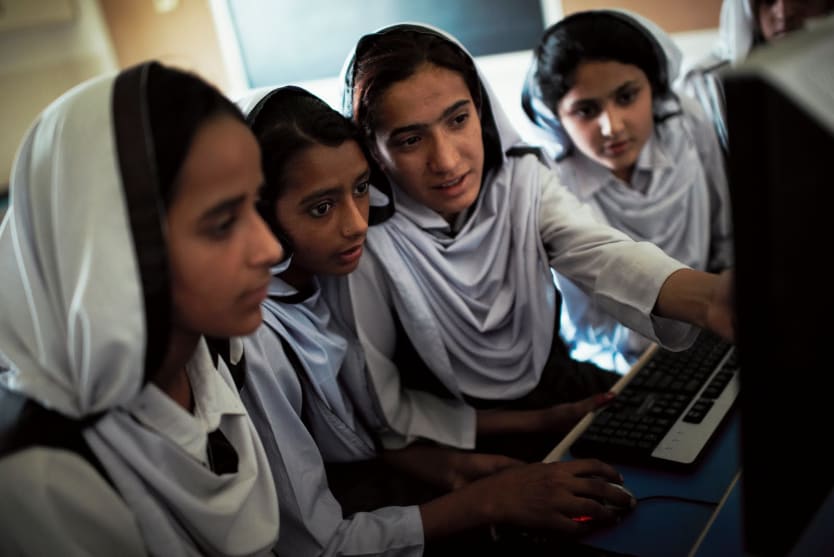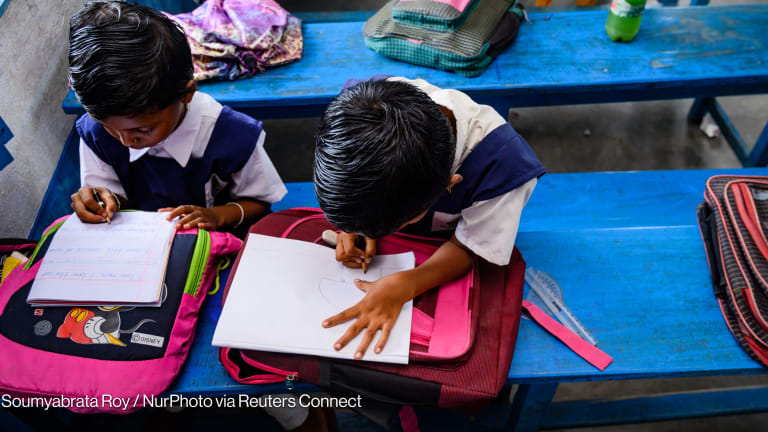
Often, when I hand someone my business card, I get a quizzical look. Nine times out of ten, I can anticipate the question they are about to ask: Why does a financial institution have a “head of girls”?
In recent years, we’ve seen a massive increase of public and private spending on women — everything ranging from female-oriented products to corporate social responsibility programs. Most in the development community have adopted ex-World Bank President Bob Zoellick’s argument that “women are smart economics.” This has led to a plethora of programs focused on women’s entrepreneurship, education and economic empowerment. A good thing, no doubt.
The uptake on adolescent girls, however, has not been so mainstream. Girls are still seen as victims or beneficiaries — not economic agents of change. Yet the evidence points to a simple fact: If you are looking for high return on investment and maximized gross domestic product growth, you have to invest in girls.
Standard Chartered is an emerging markets bank with a significant footprint in Asia, Africa and the Middle East. Our institutional success is directly correlated to the economic conditions of these countries: The more our economies grow, the larger our financial potential.
In 2006, we did the math. How can we encourage economic growth by addressing development gaps? The answer: adolescent girls, a highly vulnerable group in our markets but one with massive economic and leadership potential.
As a result, we started Goal, our leading education program to empower and equip adolescent girls with the confidence, knowledge and skills they need to be integral economic leaders in their families, communities and societies. At the time and perhaps still today, Goal was unique. Unique because a bank was committing to empowering adolescent girls, but perhaps even more so, because of the way we planned to do it: sports.
The connection between sports and adolescent girls isn’t obvious. But having witnessed it first-hand, I can attest to the power of sports. First and foremost, sports is fun; the fact that sports is used in conjunction with educational modules means the girls stay engaged, excited. It also serves as a safe place for girls, many of whom are at risk of physical and sexual abuse; you can’t learn if you are physically vulnerable. Moreover, playing on teams gives the girls a sense of community but also provides a channel for the girls to practice the skills they have learned in the Goal curriculum, such as leadership or communications. And lastly, utilizing sports allows us subtly but effectively to challenge social-cultural norms and gender stereotypes.
In some instances, a game of soccer, netball or volleyball is played before, during or after an educational session; in other situations, girls learn on the field through a game. I was in India last month and witnessed an on-the-field education game called “trust the bank.” It was a 5x5 game where two teams competed to get the ball (representing money) past the goalie through a series of passes. The goalie represented a bank manager and the passes symbolized the steps required to get a bank account. Teams only scored if they got their “money” past the bank manager. The lesson of the game was that keeping money in a bank (versus under the mattress, for example) is a safer strategy.
I later saw another game that was focused on HIV prevention. A group of 10 girls formed a circle; one girl stood in the middle of the circle. The girl in the middle tried to avoid being hit by a soccer ball being thrown by the circle of 10. The ball represented the HIV virus. Then, a second girl was invited to join the girl in the middle. The second girl could block balls for the girl in the middle. The second girl represented a condom, the lesson being that condoms can help prevent HIV infections. A third girl joined the middle and contributed to the blocking; she represented abstinence. The game continued and while the girls were playing, you could see their brains working and making sense of the lessons. They left that game exhausted, but they also left with the knowledge they needed to make educated decisions about their sexual health and well-being.
The data we have consistently demonstrate that sports and education is an effective combination. We recently completed the measurement and evaluation for 2013; we saw an increase of 88 percent of girls who became confident in their voice, a 109 percent increase of girls who believed they had the power to influence their future, a 70 percent increase in the number of girls who believed they should control the number of children they have, and a 24 percent increase in the number of girls who aspire to work or start a business.
We still have a ways to go, however. For example, our data showed us that a majority of girls still think that they must tolerate violence for the sake of the family. This is a huge issue and not one that can be ignored.
So our work continues — both in terms of refining the program but also in terms of championing the cause of adolescent girls. I am heartened that the issues adolescent girls face have garnered increased attention, and I hope the development community can harness the momentum before the moment passes. In the interim, Standard Chartered will continue to work toward a better future for girls globally, one pass, block and goal at a time.
Want to learn more? Check out She Builds and tweet us using #SheBuilds.
She Builds is a month-long conversation hosted by Devex in partnership with Chemonics, Creative Associates, JBS International as well as the Millennium Challenge Corp., United Nations Office for Project Services and U.K. Department for International Development.








